Superfund Research Program
Fact Sheet
SRP-Funded Research Improves Public Health
One of the primary goals of SRP-funded research is to improve public health. Thus, the Program supports a wide range of research to address the broad public health concerns arising from the release of hazardous substances into the environment. The intent is to provide sound science to those making public policy, regulatory, and risk reduction decisions. SRP-funded research has been successful in this area as studies have improved our understanding of the health effects associated with exposures to environmental contaminants. The following stories provide information on public health impacts. They are merely highlights and represent the breadth of work SRP researchers undertake. To see older stories, visit our archives webpage.
Lab Breakthroughs Yield Solutions for Cleaner Mining and Healthier Communities

With support from the NIEHS Superfund Research Program (SRP), researchers at the University of Arizona and the small business GlycoSurf are pioneering strategies to balance the mining of important resources with sustainable and health-protective approaches. Their biosurfactant technologies — based on compounds produced by microorganisms — offer a safe and cost-effective solution to simultaneously clean up mining waste and recover valuable rare earth elements.
From Water Cleanup to Edible Clays that Reduce Harmful Exposures in People and Animals
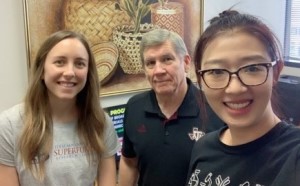
Researchers at the Texas A&M University (TAMU) Superfund Research Program (SRP) Center developed a therapeutic sorbent that can bind to many different hazardous chemicals in the body, reducing the uptake and bioavailability of those chemicals. Built on decades of research, the sorbents, which are pending FDA clearance, can be added to food or water to reduce harmful contaminant exposures.
Sustainable Technology Cleans Up PFAS in Water

An innovative technology, developed with funding from the NIEHS Superfund Research Program, successfully removes PFAS from water. The technology has been adapted to a variety of applications, including tabletop filters, whole-house water filtration systems, and large-scale cleanup projects.
Killifish Provide Clues for Human Toxicant Susceptibility
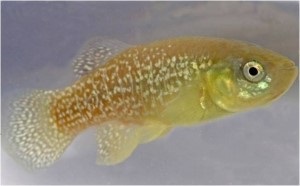
Killifish populations have adapted to survive and reproduce in polluted waters. Researchers have studied the evolutionary and genetic basis for this adaptation, discovering that it comes with a cost. For more than two decades, the Duke University Superfund Research Program (SRP) Center and collaborators at Boston University have used these 2- 3-inch-long fish to understand the toxicity, mechanisms, and health effects of two groups of hazardous contaminants, polycyclic aromatic hydrocarbons (PAHs) and polychlorinated biphenyls (PCBs).
Low-Cost Technology Cleans Up Contaminated Sites
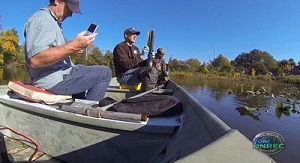
An innovative technology, developed with funding from the NIEHS Superfund Research Program (SRP), successfully delivers amendments that immobilize and degrade polychlorinated biphenyls (PCBs) in aquatic environments. The technology has proven effective in the field and resulted in millions of dollars in estimated cost savings at cleanup sites.
Collaborative Research Experiences and Training Forge Scientific Careers
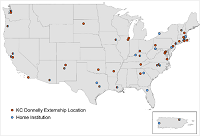
Since 2011, the K.C. Donnelly Externship Award, provided by the NIEHS Superfund Research Program (SRP), has enabled graduate students and postdoctoral fellows to learn from experts across institutional lines. This opportunity, given to several people each year, equips them with the skills and connections critical to addressing complex environmental health challenges.
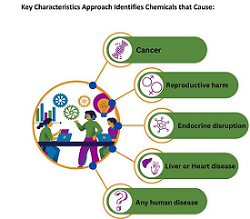
Key Characteristics Inform Risk Assessment
NIEHS-funded University of California, Berkeley Superfund Research Program Center (UC Berkeley SRP Center) researchers and collaborators developed a new approach to help risk assessors predict the toxicity of chemicals based on shared characteristics. The approach allows for identification of the events, or key characteristics, that are shared by chemicals with similar toxic effects.
Tracking Personal Exposures Over Time and Around the World
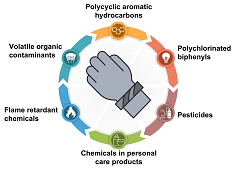
With funding from the NIEHS Superfund Research Program and other NIEHS programs, researchers at the Oregon State University (OSU) SRP Center developed a simple, non-invasive approach to monitor personal chemical exposures using silicone wristbands. The highly sensitive wristbands can be used to measure exposure to low levels of hundreds of chemicals, offering a unique tool to better understand the complex, realistic mixtures people may be exposed to.
Reporting Results Empowers Communities, Advances Health
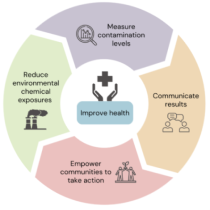
With support from the NIEHS Superfund Research Program (SRP) and other sources, collaborators across the U.S. created the Digital Exposure Report-Back Interface(DERBI), an interactive, web-based tool that presents complex chemical exposure data in an easy-to-understand way. SRP teams use DERBI to help study participants understand their personal environmental exposures with an explanation of potential exposure sources, known and suspected health effects, and exposure reduction tips.
SRP Researchers Inform Health-Related Decision Making on PFAS
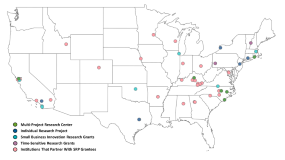
Researchers supported by the NIEHS Superfund Research Program (SRP) informed new drinking water health advisories issued by the U.S. Environmental Protection Agency (EPA) for several types of per- and polyfluorinated alkyl substances (PFAS). They also lent expertise to a new report, published by the National Academies of Science, Engineering, and Medicine (NASEM), that guides clinicians in evaluating patients for PFAS exposure and addressing associated health effects.
A Lasting Legacy in Science and Mentorship
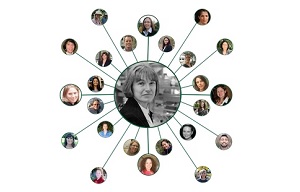
On the 25th anniversary of the death of Karen Wetterhahn, Ph.D., the NIEHS Superfund Research Program (SRP) reflects on her continued legacy in scientific excellence and mentorship. She died June 8, 1997, age 48, following dimethylmercury poisoning from a laboratory accident. Wetterhahn devoted her career to understanding how certain metals initiate cancer and other human diseases at the molecular level. She also fostered interdisciplinary links between biology, chemistry, environmental studies, engineering, and medicine.
Revolutionizing Understanding of PCBs as Air Pollutants
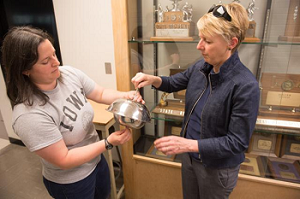
Researchers at the NIEHS Superfund Research Program (SRP)-funded Center at the University of Iowa developed new methods to improve how we compare and quantify sources of polychlorinated biphenyls (PCBs) in air. Their work is informing policies and strategies to clean up these contaminants in air, including at Superfund sites and in schools. Led by Center Director Keri Hornbuckle, Ph.D., the University of Iowa SRP Center team is renowned for their insights into sources of PCBs, how people may be exposed to them, and potential for remediation.
Using Nutrition to Reduce Harmful Effects of Pollutants
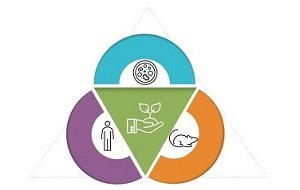
With funding from the NIEHS Superfund Research Program (SRP), researchers at the University of Kentucky (UK) SRP Center follow a multidisciplinary scientific approach to understand how environmental contaminants harm the body and explore effective interventions to protect the health of communities. Polychlorinated biphenyls (PCBs), a large group of persistent chemicals found at approximately 30% of Superfund sites, have been linked to cancer and other harmful effects.
Fundamental Discovery Points to New Therapies for Wide-ranging Diseases
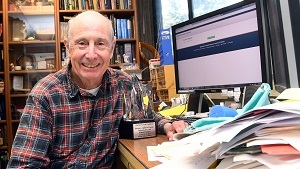
NIEHS Superfund Research Program (SRP)-funded scientists at the University of California, Davis Center have translated basic research in insects and rodents into promising new therapies and pain treatment options for dogs, horses, and humans. This decades-long research is spearheaded by the Center Director Bruce Hammock, Ph.D.
Integrating Approaches to Predict How Contaminants Move in the Environment
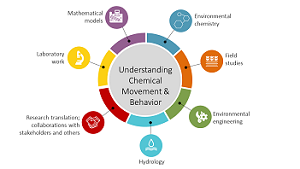
Researchers funded by the NIEHS Superfund Research Program (SRP) at the University of Arizona (UA) study how hazardous materials move in the environment. By combining mathematical models with laboratory and field studies, the team can better understand factors that cause contaminant cleanup to stall and identify cost-effective solutions to better protect human health.
SRP Researchers Tackle Arsenic from Many Angles
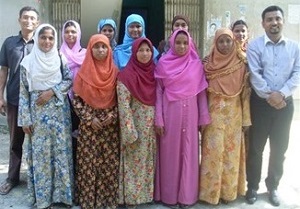
The Health Effects of Arsenic Longitudinal Study (HEALS) is a large, prospective cohort study in Bangladesh that has become a landmark research resource to understand the health effects resulting from arsenic exposure and the underlying biological mechanisms involved. With funding from the NIEHS Superfund Research Program (SRP), the cohort was first established in 2000 with 12,000 participants. Since then, it has expanded to include over 35,000 people.
Pioneering Interdisciplinary Approaches to Phytoremediation
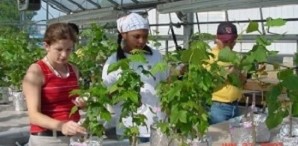
Researchers at the NIEHS-funded University of Washington Superfund Research Program Center (UW SRP Center) developed innovative approaches to enhance phytoremediation of chlorinated solvents using poplar trees. Phytoremediation is a process that uses plants to remove, break down, contain, or immobilize contaminants from soil or water.
Dartmouth SRP Center Informs Better Health Protections for Arsenic in Water
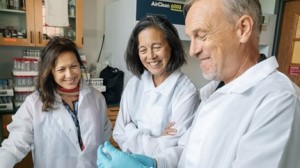
A bill to sharply lower the drinking water limit for arsenic in New Hampshire was signed into law by Governor Chris Sununu on July 12, 2019. The rule, informed by research and outreach efforts at the previously-funded Dartmouth College Superfund Research Program (SRP) Center, set the state Maximum Contaminant Level (MCL) at 5 parts per billion (ppb), which is half of the federal limit. According to the New Hampshire Department of Environmental Services (NHDES), the limit better protects human health by reducing the number of arsenic-related illnesses and deaths.



